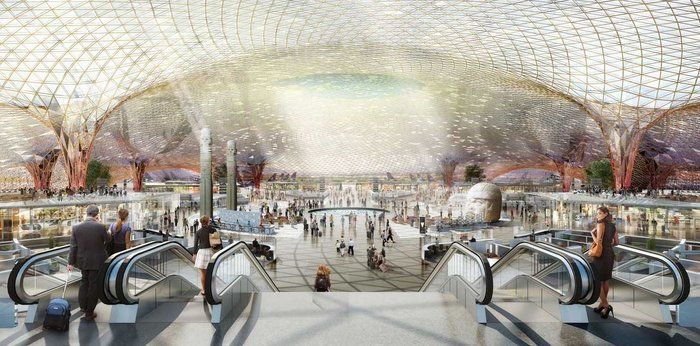Details on Mexico City’s new airport were unveiled last week by President Enrique Peña Nieto. The $9.2 billion project will increase capacity fourfold and will be by far Latin America’s largest transit hub.
A previous project was abandoned after nearby farmers protested. They are fiercely protesting again.
Since the beginning of the millennium, Mexican authorities have been talking about overhauling the capital’s existing Benito Juarez International airport, which is about to burst at the seams.
Experts say Mexico City with its existing infrastructure could just about handle a maximum of 32 million passengers annually. In 2013, a total of 31.5 million air passengers hit the city, and traffic is increasing apace.
A boost for the economy
According to the Mexico City-based think tank, The Mexican Institute for Competitiveness, the new airport could add between 1.4% and 2.5% to GDP (gross domestic product), without including the economic impact that the extra tourism would bring.
The Institute also warns that if the airport is not built, GDP would be reduced by up to 3%.
Below are some highlighted details on the new airport project:
- Cost: $9.2 billion,
- Area: 11,400 acres (555,000 sq meters),
- Runways: 6,
- Capacity: 120 million passenger per year,
- Energy: 100% from renewable sources, the first airport (outside Europe) with a neutral carbon footprint,
- Jobs: it will be the largest generator of employment in the country.
The first three runways (Phase I) will be completed by 2018.
The designers of the project
The airport will be designed by UK architects Foster + Partners, Fernando Romero (son-in-law of billionaire Carlos Slim), and NACO (Netherlands Airport Consultants).
According to Foster + Partners, it will be one of the biggest airports in the world. The entire terminal will be enclosed within a continuous lightweight gridshell.
The whole building will be serviced from beneath, so there will be no ducts and pipes on the roof.
Sketch of Mexico City Airport by Foster + Partners.
Foster + Partners says the whole structure will harness the power of the sun, it will collect rainwater, provide shading, direct daylight and enable views, while at the same time achieving a “a high performance envelope that meets high thermal and acoustic standards.”
Lord Foster said:
“Stansted Airport’s reinvention of the conventional terminal in the 1990s was emulated worldwide – this breaks with that model for the first time. It pioneers a new concept for a large-span, single airport enclosure, which will achieve new levels of efficiency and flexibility – and it will be beautiful.”
“The experience for passengers will be unique. Its design provides the most flexible enclosure possible to accommodate internal change and an increase in capacity. Mexico has really seized the initiative in investing in its national airport, understanding its social and economic importance and planning for the future. There will be nothing else like it in the world.”
President Peña Nieto wrote in a press release:
“The new Mexico City International Airport, thanks to its magnitude, design and social benefit, will be a momentous project; an emblem of modern Mexico.” (“El nuevo Aeropuerto Internacional de la Ciudad de México será por su magnitud, diseño y beneficio social una obra trascendental; emblema del México moderno.”)

